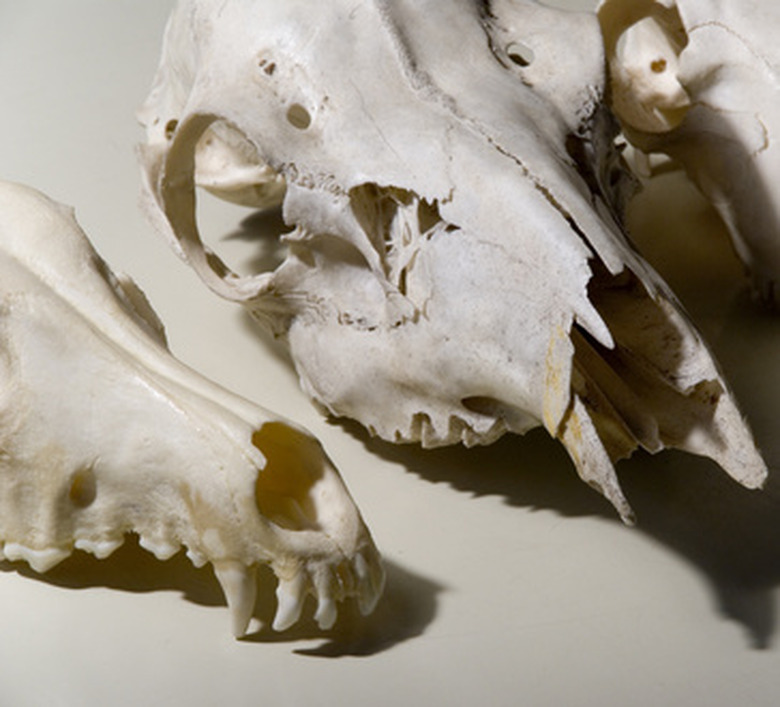How To Preserve A Skeleton
A properly preserved skeleton is a trophy or keepsake that can last for many years. The process or preserving a skeleton can be tricky if you don't use proper care. It can also be dangerous due to the risk of disease transmission when handling animal tissue and brains that may be contaminated. However, if you are not squeamish about handling the carcass of an animal and take a few simple precautions, you can clean and preserve a skeleton yourself, allowing you to choose how to best display your trophy.
Step 1
Wear protective gloves. Remove as much flesh as possible using the skinning knife, taking care not to scrape or damage the bones. The more flesh you can remove now, the less work will be required later.
Step 2
Soak the carcass for six to eight hours in warm water. Straighten the wire coat hanger. Bend one end into a loop. Feed the coat hanger into the brain cavity and use a stirring motion to break apart the brain tissue. Rinse the brain cavity with warm water and repeat the wire stirring to remove as much tissue as possible.
Step 3
Fill the cooking pot with fresh water and heat it to approximately 90 degrees Fahrenheit. Add 2 tbsp. of enzyme-based laundry detergent per gallon of water used in the cooking pot. When the water is at the appropriate temperature, add the carcass.
Step 4
Check the carcass every 15 minutes, removing flesh each time using the skinning knife and picks or dental tools until the skeleton is clean. Strain the cooking water using a colander or wire screen to catch any small bones or teeth that may detach from the carcass.
Step 5
Examine the bones for any sign of a white, waxy residue. If you find this residue, degrease the bones using undiluted ammonia or a solution of dishwashing soap and steaming (not boiling) water.
Step 6
Prepare a solution of hydrogen peroxide and water. Soak the bones in this solution for up to three days to bleach them.
Step 7
Glue the bones together using clear-drying glue.
Step 8
Spray the skeleton with several thin layers of polyurethane spray. Allow each layer to dry according to manufacturer instructions before spraying the next coat.
Things Needed
- Latex or rubber gloves
- Animal carcass
- Skinning knife
- Wire coat hanger
- Picks or dental tools
- Enzyme-based laundry detergent
- Cooking thermometer
- Cooking pot big enough to hold the carcass
- Stove or outdoor cooking fire
- Colander or wire screen
- Hydrogen peroxide
- Clear-drying glue
- Polyurethane spray
TL;DR (Too Long; Didn't Read)
To minimize odors, cook the carcass outdoors if possible.
Overcooking the carcass can damage the skeleton and even dissolve some of the bone.
In a dry climate, the bones may become brittle or cracked during drying if they have been soaked in water for too long. If ambient humidity is low, boil the carcass for the absolute minimum time necessary to remove all of the flesh and tissue.
Warning
Always wear protective gloves when handling a carcass, as tissue or raw brains can transmit disease.
Cite This Article
MLA
Moon, Rachel. "How To Preserve A Skeleton" sciencing.com, https://www.sciencing.com/preserve-skeleton-7792521/. 24 April 2017.
APA
Moon, Rachel. (2017, April 24). How To Preserve A Skeleton. sciencing.com. Retrieved from https://www.sciencing.com/preserve-skeleton-7792521/
Chicago
Moon, Rachel. How To Preserve A Skeleton last modified March 24, 2022. https://www.sciencing.com/preserve-skeleton-7792521/
